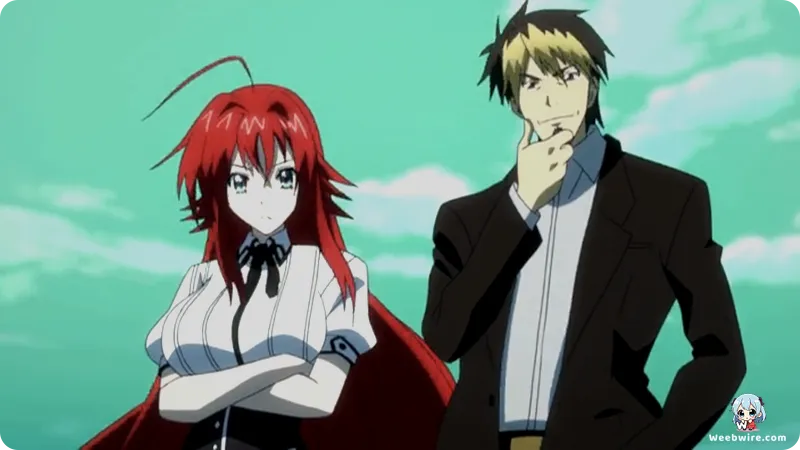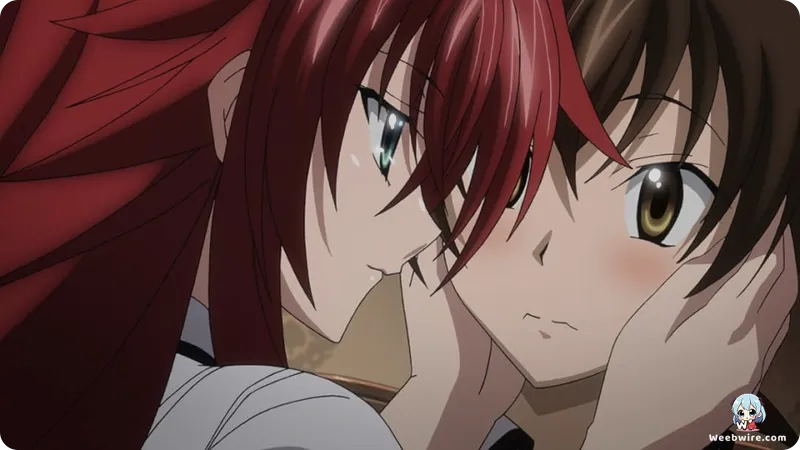The BorN Blunder: How High School DxD's Season 3 Forced a Massive Canonical Retcon and Studio Change

The globally recognized fantasy-action franchise High School DxD, famous for following the exploits of the lecherous yet fundamentally heroic devil Issei Hyoudou and his formidable supernatural allies, is typically lauded for its successful fusion of high-stakes battles and signature ecchi comedy. Yet, within its history lies a contentious chapter: the third season, High School DxD BorN, including supplementary material like the OVA Yomigaeranai Fushichou (The Phoenix That Doesn't Rise). This period represents one of the most drastic canonical missteps ever recorded in a prominent anime adaptation, triggering an unprecedented intervention by the original creator and resulting in a complete overhaul of the production studio for subsequent installments. BorN stands today as a compelling study on the inherent tensions between adaptation fidelity and creative license.
The Deviation from Source Material
The central controversy surrounding BorN stems from the decision by Studio TNK (the production house responsible for the series' first three seasons) to abandon the source material midway through. Rather than adhering faithfully to Light Novel volumes 5, 6, and 7, the studio elected to craft an anime-original conclusion for the latter half of the season. This deviation proved immediately detrimental to the series' continuity. Crucial narrative elements, including the strategic movements of the Khaos Brigade, the introduction of vital secondary characters, and the meticulously developed relationship between Issei and Rias Gremory, were either severely compressed, misrepresented, or entirely discarded. In their place, the production rushed toward an accelerated, original climax featuring the Norse deity Loki and the formidable wolf Fenrir.
This creative divergence had profound and damaging effects, particularly on the established power dynamics and Issei’s character trajectory. The light novels utilized the events of those skipped volumes to organically develop Issei's abilities and deepen his bond with the powerful Welsh Dragon Ddraig, setting the stage for major future conflicts. The anime’s original ending, conversely, introduced an arbitrary power-up that felt unearned and contradicted the very mechanics governing the Devil system and the Sacred Gear concept. This resulted in an irreconcilable chasm between the animated timeline and the ongoing narrative of Ichiei Ishibumi's novels, deeply frustrating the franchise's dedicated readership who recognized the long-term damage caused by these omissions.

Creator Intervention and Canonical Correction
The backlash was so substantial that when the fourth season was commissioned, author Ichiei Ishibumi took the extraordinary measure of publicly confirming that the final half of BorN was entirely non-canonical. He then collaborated extensively with the new creative team to execute a significant 'retcon' of the third season's events. The resulting fourth season, High School DxD Hero, debuted with a distinctly updated art style and, critically, a new production partner, Studio Passione. Hero effectively initiated a soft reboot, dedicating its initial episodes to re-adapting the very volumes that BorN had previously distorted or skipped. This rare decision to restart continuity underscores the seriousness of the canonical errors committed by the former studio.
While the main season faced heavy criticism, the associated OVA, High School DxD BorN: Yomigaeranai Fushichou, offers a contrast. Often bundled with specific light novel releases, such as Volume 21, these supplementary episodes generally maintained greater fidelity to the source material's self-contained side stories and humorous vignettes. Yomigaeranai Fushichou focuses on characteristic, character-driven scenarios, typically highlighting Issei’s signature perverted hijinks and the girls' reactions, successfully capturing the true spirit and humor of the light novels without engaging with the complex main plot errors. Fans often treasure these OVAs for their faithful, standalone quality.
It is worth noting the unique foundation of Issei Hyoudou’s strength. His legendary techniques, like Dress Break and his powerful Balance Breaker form, are fundamentally powered not just by willpower, but explicitly by his intense, persistent perversion. This core, humorous concept transforms the character’s greatest 'weakness' (his overwhelming lust) into the literal source of his demonic power. This audacious piece of world-building, where the 'Oppai Dragon' is a canonical engine of continuous evolution against insurmountable odds, is essential to the series’ success in balancing serious action with its defining ecchi elements. Ultimately, High School DxD BorN remains a powerful lesson in anime history: a cautionary tale highlighting the necessity of respecting established source material, leading directly to the dramatic canonical correction and studio transition that defined the subsequent phase of the anime adaptation.
Credits
High School DxD BorN
Author
Ichiei Ishibumi
Cover Art
Miyama-Zero
Studio
TNK
Publisher
Fujimi Shobo
Producers





